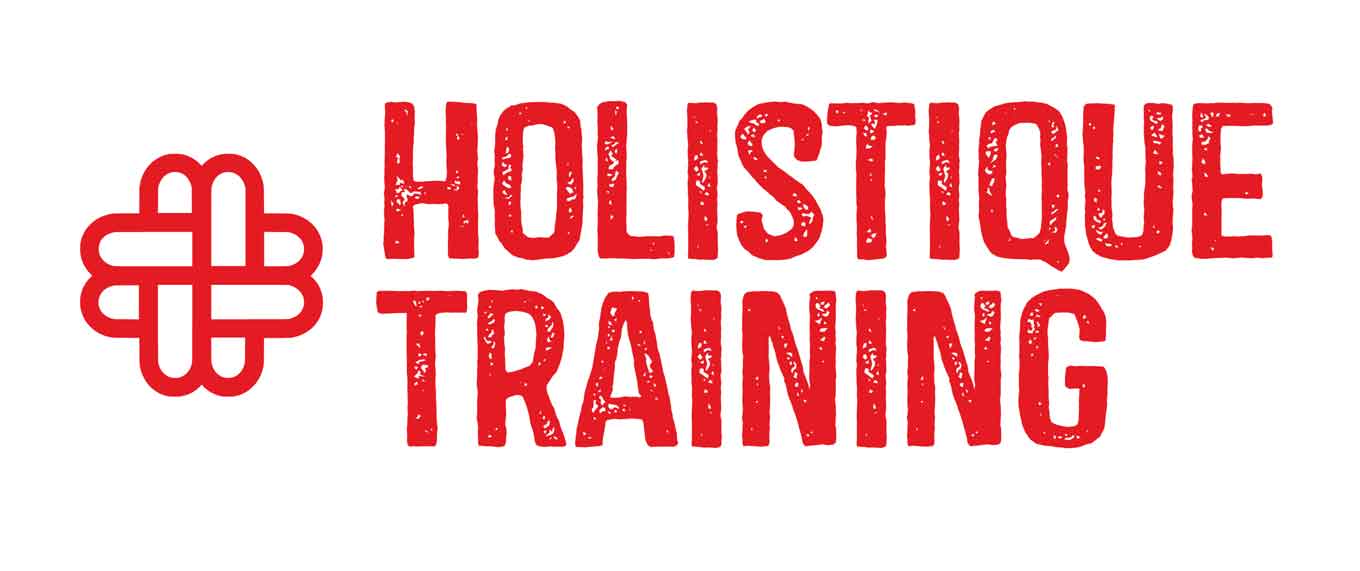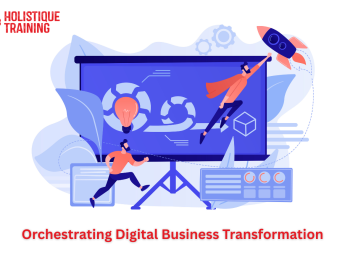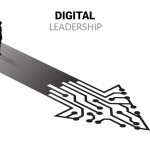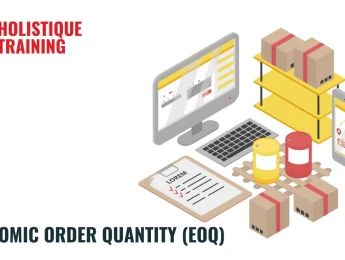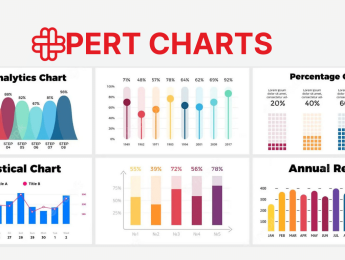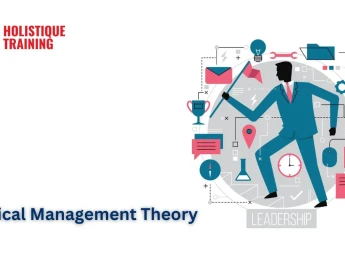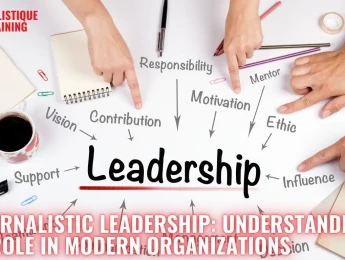- Table of Contents
- Introduction
- Understanding the Scope of Digital Transformation
- 1. Business model innovation
- 2. Operational transformation
- 3. Customer experience transformation
- 4. Organizational and cultural transformation
- Examples
- The Role of Orchestration in Transformation
- The Digital Transformation Framework
- Vision & Strategy
- Assessment & Readiness
- Roadmap & Prioritization
- Implementation & Scaling
- Sustainability & Continuous Innovation
- Key Enablers of Orchestration
- Technology Enablers
- Organizational Enablers
- Leadership’s Role in Digital Orchestration
- The C-Suite’s Strategic Sponsorship
- Key Transformation Roles
- Inspiring Cultural Change
- Overcoming Resistance
- Leading Through Uncertainty and Experimentation
- Aligning People, Process, and Technology
- The People Dimension
- The Process Dimension
- The Technology Dimension
- Reskilling and Upskilling Programs
- The Customer at the Heart of Transformation
- Data and Analytics to Anticipate Needs
- Seamless Omnichannel Experiences
- Hyper-Personalization and Journey Mapping
- Real-Time Responsiveness and Feedback Loops
- 9. Measuring Success in Digital Transformation
- Core KPIs and Metrics
- The Role of Data Dashboards
- 10. Common Pitfalls and How to Avoid Them
- 1. The “Technology First” Trap
- 2. Resistance from Middle Management
- 3. Siloed Initiatives
- 4. Underestimating Culture
- 11. Case Studies and Real-World Lessons
- 12. The Future of Orchestrating Digital Transformation
- Generative AI: Redefining Creativity and Efficiency
- Hyper-Automation: Beyond Process Efficiency
- Digital Twins: Simulating the Future Before It Happens
- Sustainability & ESG Integration
- Preparing for the Future
- Conclusion
Introduction
Digital business transformation is not just digitization—or even digitalization—but rather a holistic reinvention of how a company operates, delivers value, and wins in the digital era. Digitization refers to converting analog information into digital form (e.g., scanning paper), while digitalization is the use of digital technologies to improve processes. In contrast, digital business transformation entails rethinking business models, culture, and organizational structures to thrive in a digital world.
The metaphor of “orchestrating” digital transformation is powerful: like a conductor uniting strings, winds, and percussion, business leaders must bring together strategy, technology, people, and processes in harmonious coordination. Strategy sets the composition; technology provides instruments; people bring interpretation; processes give rhythm.
This orchestration has become urgent because of key drivers: rapidly shifting customer expectations (e.g., demand for instant, personalized service); increasing competitive pressure from digital-native insurgents; and disruptive technologies like AI, cloud, and IoT reshaping what's possible. On top of that, global events—most notably COVID-19—acted as an accelerant: lockdowns forced companies to shift overnight toward digital channels, remote work, and online service models, pulling forward years’ worth of digital evolution in months.
In this article, we will discuss the scope of digital transformation across four dimensions; the critical role of orchestration; a stage-by-stage transformation framework; key enablers; leadership’s role; how to align people, processes, and technology; centering the customer; measuring success; avoiding pitfalls; real-world case examples; future trends; and closing thoughts with a call to action.
Understanding the Scope of Digital Transformation
Digital transformation unfolds across four interdependent dimensions:
1. Business model innovation
It involves unlocking new revenue streams or moving to platform-centric models. Think of traditional retailers adopting subscription services or manufacturers offering “product-as-a-service.” It’s about shifting from selling products to selling value bundles or outcomes.
2. Operational transformation
This emphasizes automation and process redesign. By applying lean principles, RPA (robotic process automation), or AI-driven workflows, organizations can streamline operations, reduce costs, and accelerate cycle times.
3. Customer experience transformation
Customer experience transformation focuses on personalization and omnichannel delivery. It means delivering seamless, cohesive experiences whether customers engage via mobile app, social media, or in-store—anticipating needs and enabling smooth transitions across channels.
4. Organizational and cultural transformation
cultural transformation centers on fostering an agile mindset and continuous learning. It's about breaking down silos, encouraging experimentation, empowering teams, and embedding learning loops so that the organization evolves dynamically.
Examples
- Successful transform: A global retailer (like Nike) that shifted focus to direct-to-consumer digital channels, built an app ecosystem, and launched data-powered personalization to drive growth.
- Failed to adapt: Traditional photo-based businesses, like Kodak, which clung to film and ignored the pivot to digital photography and ecosystem services, ultimately collapsing.
The Role of Orchestration in Transformation
Orchestration is the intentional coordination of functions, technologies, and stakeholders around a unified transformation agenda. Unlike ad-hoc digital pilots—disconnected initiatives in IT, marketing, or operations—orchestration ensures alignment, synergy, and value realization.
Here’s a comparison table to illustrate how orchestration contrasts with ad-hoc efforts:
Aspect | Ad-hoc Digital Initiatives | Orchestrated Transformation |
Scope | Isolated projects; siloed and uncoordinated | Holistic, enterprise-wide planning and execution |
Leadership | Localized; often tactical | Central governance with strategic sponsorship |
Alignment | Weak business-tech alignment | Direct linkage of digital investments to business goals |
Risk management | Fragmented; unpredictable outcomes | Structured oversight and portfolio balancing |
Scalability | Limited; success rarely extends beyond pilot | Systematic scaling across functions and geographies |
A well-functioning transformation office or governance framework acts as the conductor—setting priorities, allocating resources, managing KPIs, and ensuring cross-functional collaboration.
Aligning business goals with technology investments is vital. A recent study by McKinsey found that organizations with strong alignment between business strategy and digital tech adoption are nearly three times more likely to outperform their peers in growth and profitability.
The Digital Transformation Framework
A disciplined transformation journey unfolds across five critical phases—each serving a vital purpose:
Vision & Strategy
Setting a bold digital ambition involves articulating a compelling future state—what digital means for your business, what heights you intend to reach, and key metrics to measure impact (e.g., digital revenue share, customer digital adoption rates).
Assessment & Readiness
Conduct a thorough diagnostic of current capabilities—technology stack maturity, process bottlenecks, data readiness, digital skills, and cultural readiness. This baseline informs where investments are needed.
Roadmap & Prioritization
Map out transformation initiatives, sequence them to balance risk, impact, and interdependencies, and prioritize quick wins that build momentum and credibility, while reserving capacity for foundational investments.
Implementation & Scaling
Execute using agile methods, pilot initiatives in controlled environments, learn rapidly, iterate, and scale successful pilots across departments or regions.
Sustainability & Continuous Innovation
Transformation isn’t a one-time project—it becomes part of the organizational fabric. Embedding learning cycles, updating roadmaps, and nurturing innovation ensures the organization stays adaptive long-term.
Key Enablers of Orchestration
A successful digital business transformation is rarely the result of a single technology or a single visionary leader. It’s the combined effect of technological readiness and organizational maturity—the two pillars that support orchestration. Think of them as the instruments and the musicians in an orchestra: having one without the other produces noise, not music.
Technology Enablers
1.Cloud Computing
Cloud computing has shifted from being an optional cost-saving measure to becoming the backbone of modern business agility. It allows organizations to scale infrastructure up or down instantly, launch products faster, and tap into global collaboration without the overhead of physical data centers. For example, a retail company can run massive holiday promotions without worrying about server crashes, while a healthcare provider can securely store and access patient records from anywhere.
2. Artificial Intelligence & Analytics
AI and analytics turn raw data into actionable insights. Predictive analytics can anticipate customer churn, detect equipment failures before they happen, or recommend personalized products in real time. AI-driven algorithms can also automate repetitive tasks, freeing human talent for more creative and strategic work. Companies that embed AI into decision-making processes often see both faster reaction times and more accurate business forecasts.
3. IoT & Connected Devices
The Internet of Things extends digital reach into the physical world. Smart sensors can monitor supply chains, track energy consumption, or collect customer behavior data in retail stores. By capturing real-time information, IoT enables new value propositions, such as predictive maintenance in manufacturing or personalized health tracking in fitness and medical industries.
4. Blockchain for Trust and Transparency
In industries where trust is paramount—finance, pharmaceuticals, or food supply—blockchain provides an immutable record of transactions. This transparency can prevent fraud, verify authenticity, and ensure compliance with regulations. For example, a food producer can trace ingredients back to their origin, assuring consumers of ethical sourcing and safety.
Organizational Enablers
Leadership Commitment
Digital transformation initiatives succeed when leaders actively champion them—not just by signing off budgets, but by visibly engaging in the journey. This includes communicating the vision, allocating resources, and participating in pilot programs. Employees are far more likely to embrace change when they see executives “walking the talk.”
Digital-First Culture
A culture that values experimentation over perfection encourages innovation. This means creating a safe space where calculated risks are rewarded, failures are treated as learning opportunities, and digital literacy is seen as essential at every level. In such environments, transformation becomes an organic process rather than a top-down mandate.
Skills and Talent Development
Technology changes quickly, so skills must evolve just as fast. Investing in upskilling programs—such as data literacy workshops, cloud certifications, and agile training—prepares employees to work effectively in digital-first settings. Organizations that prioritize talent development reduce resistance to change and boost productivity.
Cross-Functional Collaboration
Digital transformation often requires breaking traditional departmental boundaries. Marketing, IT, operations, and customer service need to work toward shared goals rather than optimizing only their own functions. Cross-functional teams encourage creative problem-solving and ensure that transformation initiatives are cohesive, not fragmented.
Leadership’s Role in Digital Orchestration
No matter how advanced the technology, transformation is a leadership challenge first. Leaders act as the conductors of the digital orchestra—setting the tempo, aligning the musicians, and ensuring every section plays in harmony.
The C-Suite’s Strategic Sponsorship
C-suite executives hold the authority and influence to set bold transformation goals, secure resources, and rally the organization. Without their active sponsorship, even the most promising initiatives risk being deprioritized or underfunded. Strategic sponsorship means more than verbal support—it involves consistent oversight, integration of transformation goals into business strategy, and personal accountability for results.
Key Transformation Roles
Role Type | Responsibilities |
Chief Digital Officer | Defines the digital vision, ensures alignment between technology and business strategy, drives innovation, and manages organizational change. |
Transformation Lead | Oversees the execution of the transformation roadmap, coordinates across business units, monitors progress, and resolves roadblocks. |
These roles serve as the central hub for all transformation activities, ensuring that projects aren’t just initiated, but also sustained, scaled, and continuously improved.
Inspiring Cultural Change
Leaders must be visible champions of change. Storytelling plays a critical role—communicating not just what the transformation entails, but why it matters for employees, customers, and the organization’s future. Celebrating small wins builds momentum and demonstrates that progress is happening. Leaders who model the desired behaviors—such as embracing digital tools themselves—signal that change is not optional, but part of the organization’s identity.
Overcoming Resistance
Resistance often comes from middle management or frontline employees concerned about role changes, job security, or skill requirements. Effective leaders address this by providing clarity, support, and training. They also invite feedback and involve skeptics in pilot projects, turning potential blockers into advocates.
Leading Through Uncertainty and Experimentation
Digital transformation is inherently uncertain. Not all initiatives will succeed, and unexpected challenges are inevitable. Great leaders provide stability in the face of ambiguity, encouraging teams to experiment, learn, and adapt without fear of failure. This leadership style turns uncertainty into a catalyst for innovation rather than a source of paralysis.
According to a Gartner 2024 report, organizations where leadership plays an active, hands-on role in digital transformation are twice as likely to achieve or exceed their intended outcomes compared to those with passive or symbolic leadership involvement. This underscores that in orchestration, leadership isn’t just one section of the orchestra—it’s the conductor, the score, and the rhythm all at once.
Aligning People, Process, and Technology
Digital transformation is not a purely technological initiative—it is a socio-technical change. Orchestration only works when people, process, and technology evolve together, reinforcing one another. If even one of these three pillars is neglected, the entire transformation can stall or collapse.
The People Dimension
People are the heart of any transformation. They bring the creativity, problem-solving skills, and cultural shifts needed to make technology and processes effective. However, people can also be the greatest source of resistance if they feel excluded, threatened, or overwhelmed.
Change management strategies are essential to address these risks.
- Clear communication: Explain why change is necessary, what it will look like, and how it will benefit employees and customers.
- Stakeholder engagement: Involve employees early—especially those whose roles will be most affected—so they feel ownership.
- Addressing fear and resistance: Provide support mechanisms, such as open Q&A sessions, anonymous feedback channels, and peer champions who model the change.
The Process Dimension
Processes are the link between people and technology—they define how work gets done. Inefficient, outdated, or siloed processes will undermine even the most advanced tools.
Modern transformation approaches, such as design thinking, start by mapping current processes from the perspective of the end-user or customer. This human-centered approach:
- Places customer needs at the core of redesign efforts.
- Encourages rapid prototyping to test new workflows before full rollout.
- Integrates feedback loops so processes can evolve continuously.
The Technology Dimension
Technology is the enabler—but without skilled people and streamlined processes, it’s just expensive infrastructure. Aligning technology means selecting tools that are not only cutting-edge but also compatible with the organization’s culture, goals, and workflows. Seamless integration across platforms ensures employees can access the right information at the right time, without duplication or bottlenecks.
Reskilling and Upskilling Programs
A transformation will falter if employees are not equipped to use new tools or adapt to new processes. Companies leading in digital adoption invest heavily in training, not as a one-off event, but as an ongoing practice. Examples include:
Program Type | Description |
Digital Academies | Structured internal training focused on emerging digital competencies. |
Job Rotation / Shadowing | Temporary placement in digital roles to build cross-functional understanding. |
Certification Paths | External qualifications in areas such as cloud computing, data analytics, and agile methodologies. |
Reskilling is not just a cost—it’s an investment in adaptability. Employees who grow with the transformation are more engaged, innovative, and loyal.
Alignment in Practice:
True orchestration means these three pillars—people, process, technology—are not managed in isolation. Instead, they are synchronized, much like the rhythm, melody, and harmony in music, to create a cohesive performance.
The Customer at the Heart of Transformation
Saying “the customer comes first” is easy; orchestrating transformation around this principle is much harder. In a world where consumers have more choices, louder voices, and shorter attention spans than ever before, customer-centricity must be embedded in every decision, from strategy to execution.
Data and Analytics to Anticipate Needs
Data has become the new currency of competitive advantage. By analyzing purchase histories, browsing behavior, and social media interactions, companies can predict what customers are likely to want next—whether that’s a replenishment reminder, a complementary product recommendation, or a proactive service intervention.
Seamless Omnichannel Experiences
Modern customers expect continuity. They might research a product on their phone, test it in-store, and then purchase it via desktop. Orchestration ensures that each channel is connected so that the transition between them feels effortless. Inventory systems, customer service records, and marketing offers must all be synchronized in real time.
Hyper-Personalization and Journey Mapping
Generic mass marketing is giving way to hyper-personalized interactions that treat customers as individuals, not demographics. This is achieved by mapping the customer journey, identifying emotional highs and lows, and tailoring communications to meet their exact context and intent.
Real-Time Responsiveness and Feedback Loops
With AI-powered chatbots, in-app surveys, and sentiment analysis tools, companies can respond to feedback instantly. This not only improves customer satisfaction but also signals attentiveness, building trust.
A Forrester Experience Index (2024) study found that companies excelling at customer experience grow revenue 5–10% faster than their peers, while those lagging in CX risk losing up to 15% of revenue due to churn and negative word of mouth. The message is clear: in orchestration, the audience is not passive—they are active participants whose reactions shape the performance.
Measuring Success in Digital Transformation
Transformation without measurement is like playing music without ever listening to the result. Leaders need to track the right metrics to know whether their orchestration is producing harmony—or just noise.
Core KPIs and Metrics
- Digital adoption rates – Measure how many customers and employees are actively using digital channels or tools.
- ROI on technology investments – Quantify returns, not only in revenue growth but also in cost savings and productivity gains.
- Customer satisfaction – Use Net Promoter Score (NPS) or Customer Effort Score (CES) to gauge loyalty and ease of interaction.
- Operational efficiency gains – Track reductions in cycle time, cost per transaction, or error rates.
The Role of Data Dashboards
Dashboards transform static reports into living, breathing insights. Real-time metrics allow decision-makers to pivot quickly, double down on successes, or address emerging problems before they escalate. They also democratize data access, enabling teams at all levels to take ownership of outcomes.
By making measurement an integral part of orchestration, organizations ensure they are always in tune with performance and can make mid-course corrections without losing momentum.
Common Pitfalls and How to Avoid Them
Even the most promising transformation efforts can fail if they fall into common traps. Recognizing these risks early is essential to maintaining momentum.
1. The “Technology First” Trap
Shiny new tools are tempting, but investing in technology without a clear business case often leads to poor adoption. To avoid this, start with strategy and use cases, then select technology that supports them.
2. Resistance from Middle Management
Middle managers often act as the “translators” between leadership vision and frontline execution. If they are unconvinced, change stalls. Involve them in planning, give them a voice in decision-making, and equip them with the tools to lead change in their teams.
3. Siloed Initiatives
Isolated projects—no matter how innovative—rarely generate enterprise-wide value. A governance framework ensures projects are aligned, integrated, and reinforcing each other.
4. Underestimating Culture
Culture is the hidden conductor of transformation. Without cultural alignment—embracing agility, openness to learning, and customer-first thinking—technology investments will not deliver their full potential.
Avoidance Strategy:
The most successful organizations pair technology investments with robust change management, clear communication, cross-functional integration, and cultural development programs. This holistic approach keeps the orchestra in sync and the transformation on track.
Case Studies and Real-World Lessons
Success story: A leading global consumer brand (e.g., LEGO) transformed itself by building a digital ecosystem—online stores, apps, and digital experiences—and adopted agile ways, boosting both top-line growth and brand engagement.
Turnaround story: A major bank that began with scattered pilots eventually centralized its transformation office, standardized platforms, and retrained staff—leading to renewed revenue growth and customer satisfaction.
Failure story: A legacy telecom provider launched standalone mobile apps and analytics projects, but without integration or leadership support, failed to lift customer engagement. The lack of orchestration meant no synergy, and projects were eventually shelved.
The Future of Orchestrating Digital Transformation
One of the most important truths about digital transformation is that it has no finish line. Unlike traditional business initiatives with a defined start and end date, transformation is a continuous, adaptive process—one that evolves with market shifts, technological breakthroughs, and societal expectations. The coming years will bring opportunities and challenges that demand even more sophisticated orchestration.
Generative AI: Redefining Creativity and Efficiency
Generative AI is moving from experimental novelty to a mainstream business tool. It can write marketing copy, generate product designs, produce software code, and even create synthetic datasets for safer AI training. But its greatest potential lies in augmenting human creativity—helping employees brainstorm ideas faster, explore multiple design options, and personalize content at scale. Businesses that integrate generative AI thoughtfully, with clear governance and ethical guidelines, will unlock speed and innovation advantages their competitors can’t match.
Hyper-Automation: Beyond Process Efficiency
Hyper-automation takes robotic process automation (RPA) and combines it with AI, analytics, and machine learning to automate not just repetitive tasks, but complex, decision-based workflows. Imagine an insurance claim system that processes applications, validates data against multiple sources, flags anomalies, and issues payouts—without human intervention, except in exceptional cases. This level of automation can free up entire departments to focus on higher-value activities, while reducing errors and costs.
Digital Twins: Simulating the Future Before It Happens
A digital twin is a virtual replica of a physical asset, process, or system that is continuously updated with real-world data. Manufacturers can use them to simulate production line changes, cities can model traffic flows before implementing infrastructure changes, and energy companies can predict the impact of maintenance on grid stability. This ability to test scenarios virtually reduces risk, speeds innovation, and allows data-driven decision-making with unparalleled precision.
Sustainability & ESG Integration
Environmental, Social, and Governance (ESG) considerations are no longer peripheral—they are central to brand reputation and investor confidence. Digital tools, from AI-powered energy optimization to blockchain-based supply chain tracking, allow companies to measure and reduce their environmental footprint. For example, IoT sensors can monitor real-time emissions, while analytics platforms identify inefficiencies in resource usage. This transparency not only fulfills regulatory and stakeholder expectations but also opens new market opportunities for eco-conscious products and services.
Preparing for the Future
To thrive in this evolving environment, organizations must:
- Build adaptive capabilities: Develop structures and mindsets that can pivot quickly when technology or markets shift.
- Embed AI literacy: Ensure that employees at all levels understand the capabilities, limitations, and ethics of AI tools.
- Treat transformation as ongoing evolution: Create governance models and budgets that sustain innovation year after year, rather than treating it as a one-off capital project.
The orchestration of tomorrow will be more dynamic, more complex, and more dependent on cross-industry collaboration than ever before. Businesses that understand this now will lead in the next decade.
Conclusion
In today’s fast-changing business landscape, digital transformation is no longer a future goal but a present necessity, and its success depends on the ability to orchestrate every element of the organization in harmony. This means thinking big and setting ambitious goals, aligning technology with strategy, breaking down silos to coordinate across functions, and embedding a culture that embraces experimentation, learning, and adaptability. It also requires decisive leadership that keeps the customer at the heart of every decision, uses data to measure progress continuously, and treats missteps as opportunities for growth. Leaders must view themselves not as soloists but as conductors, guiding the diverse “instruments” of people, processes, and technology to play in unison and create lasting value. The time to act is now—those who begin orchestrating their transformation with clarity, commitment, and customer focus will not only stay competitive today but will set the standards for their industries in the years ahead.
